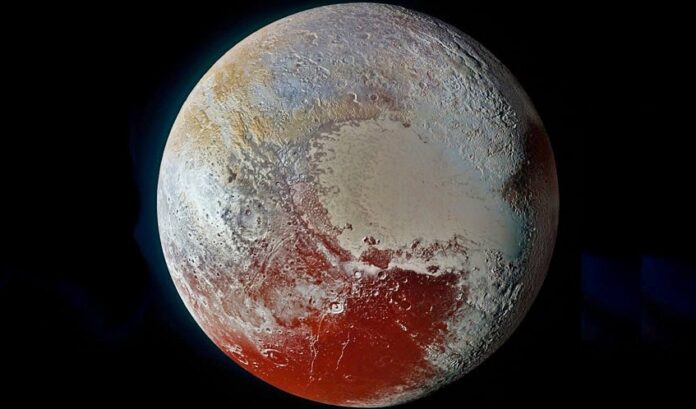In this article, you will find the most interesting facts about Pluto. By decision of the International Astronomical Union, Pluto has not been considered a planet for several years; nevertheless, it remains a “dwarf” in the Solar System.
However, thanks to the New Horizons space probe, humanity has gained valuable information about this celestial body. Here are some interesting facts about Pluto that you probably didn’t know before reading this article!
Interesting Facts about Pluto:
- The first photo of Pluto was obtained only during the aforementioned New Horizons mission in 2015.
- Of all the dwarf planets, only Pluto has a permanent atmosphere. It has long been established that although Pluto is far from the Sun and has an extremely low temperature (averaging around -220°C), its atmosphere is thin.
- Pluto is not only smaller than all the planets in the Solar System but also smaller than seven of their moons, including our own. Its mass is approximately 6 times greater, but its diameter is one and a half times smaller. Ganymede, the largest moon in our system, is more than twice the diameter of this dwarf planet.
- When Pluto was first discovered, it was called Planet X, but then something better was needed. The name Pluto was suggested by Venetia Burney, an 11-year-old schoolgirl from Oxford, England. She thought the name would be suitable for such a cold and dark place. When the name was proposed to researchers, they liked the idea.
- The existence of Pluto was predicted by American astronomers between 1906 and 1916.
- In two US states, Pluto is still officially considered a planet. These are Illinois, where Clyde Tombaugh was born and discovered it, and New Mexico, where the astronomer lived for a long time.
- Another interesting fact about Pluto – on its surface and in its depths, there is not only water but also a lot of ice. Moreover, freezing millions (or even billions) of years ago was very strong, comparable to steel.
- Although some astronomers still work diligently to challenge this decision, Pluto lost its status in 2006.
- Pluto’s mass is so small that it does not affect the orbits of Neptune and Uranus, although astronomers expected the opposite.
- This planet can only be seen in a 200-millimeter telescope, and observing it will take several nights because it moves very slowly.
- The hypothesis of 1936 that Pluto is a moon of Neptune has not yet been confirmed. Many try to make Pluto the ninth planet because it has an atmosphere, its moons, and polar caps.
- There is almost no sunlight on Pluto. On its surface, the black sky and stars are visible even during the day.
- All the planets of the Solar System orbit around the star in approximately the same plane. However, Pluto’s orbit is inclined seventeen degrees from this plane.
- Pluto’s equatorial plane is the largest feature on this celestial body, with huge basins occupying about five percent of its surface.
- Curious fact about Pluto – on top of Pluto’s mountains, there is snow, but it consists mainly of methane.
- The astronomical symbol of Pluto is a combination of the letters P and L. It represents the first two letters of the dwarf planet and also the abbreviation of the astronomer Percival Lowell.
